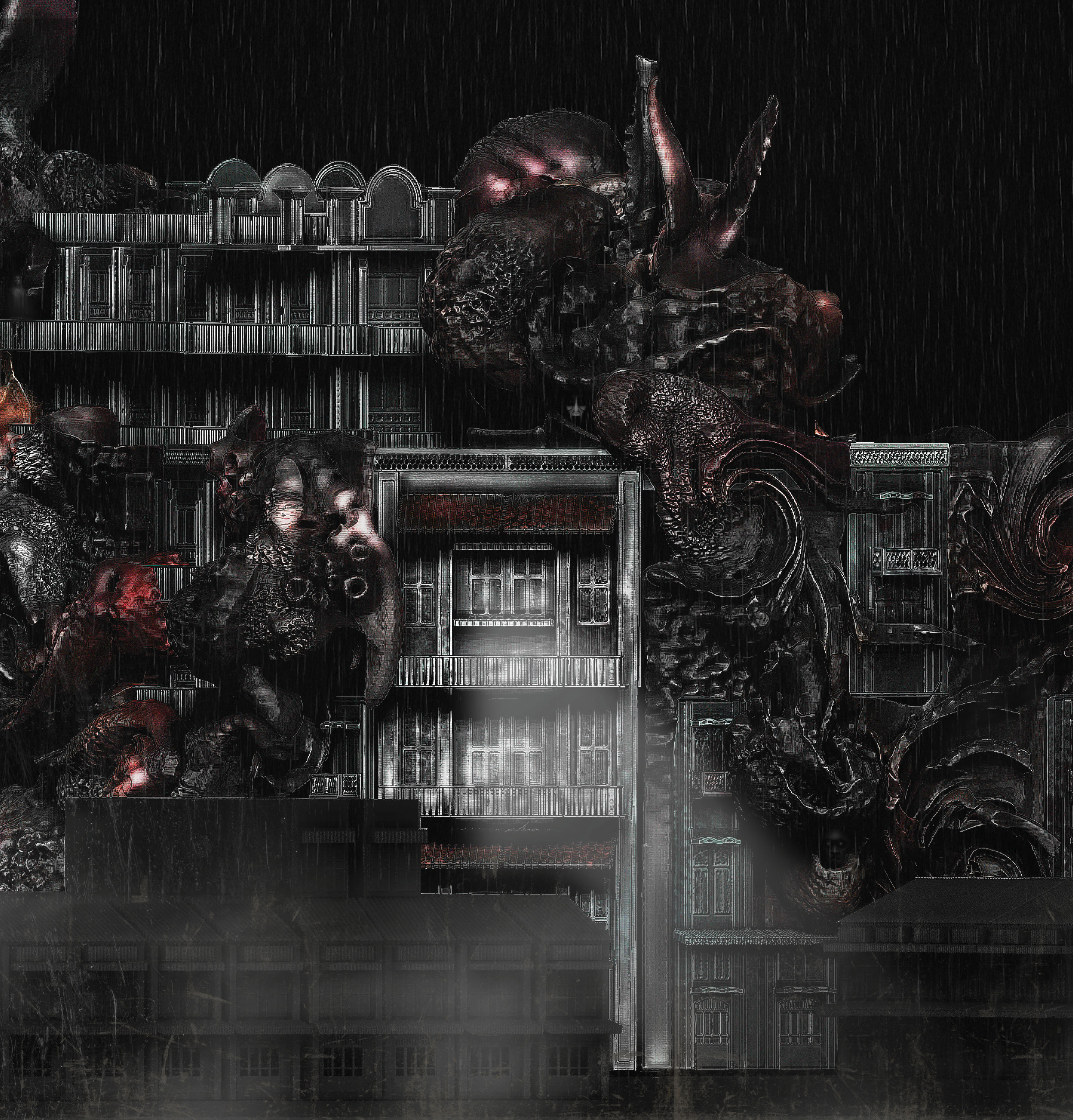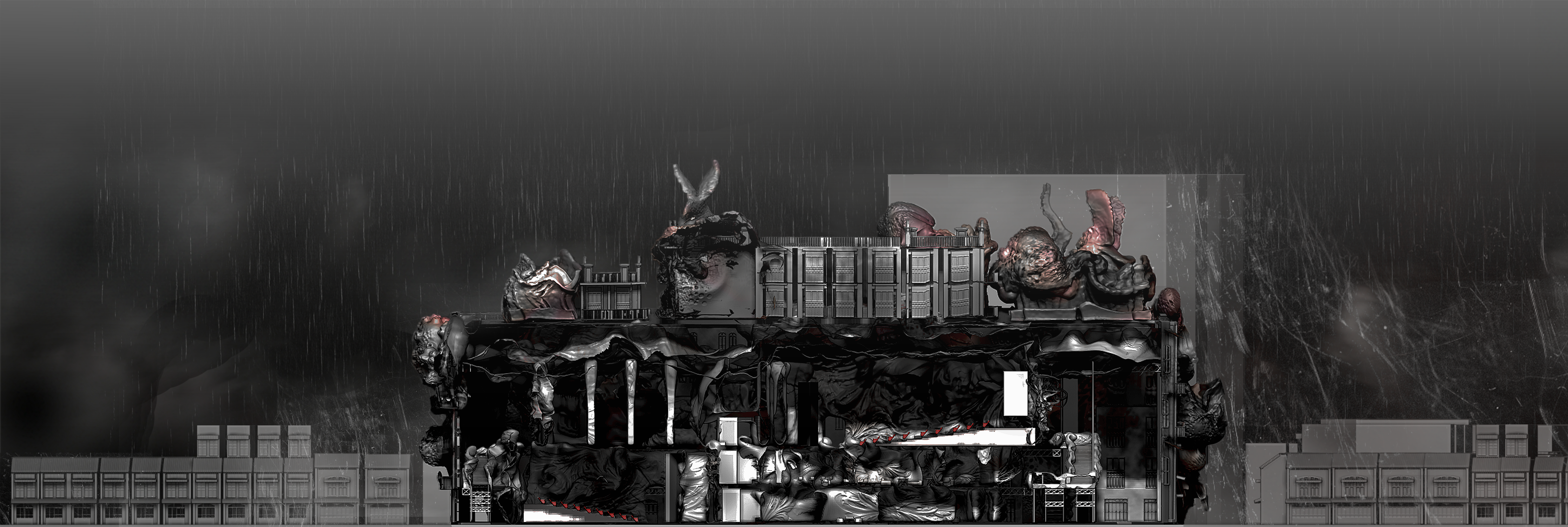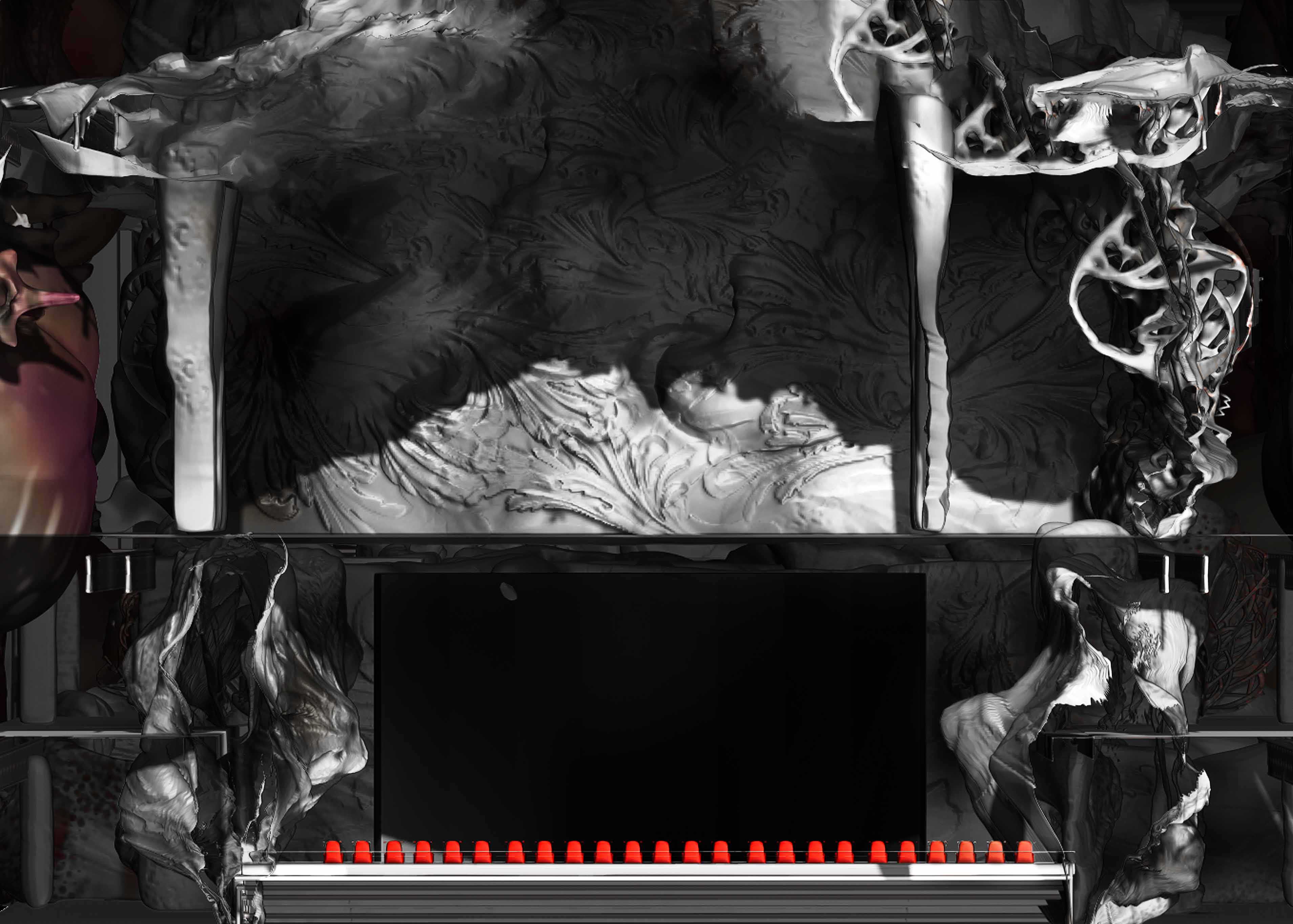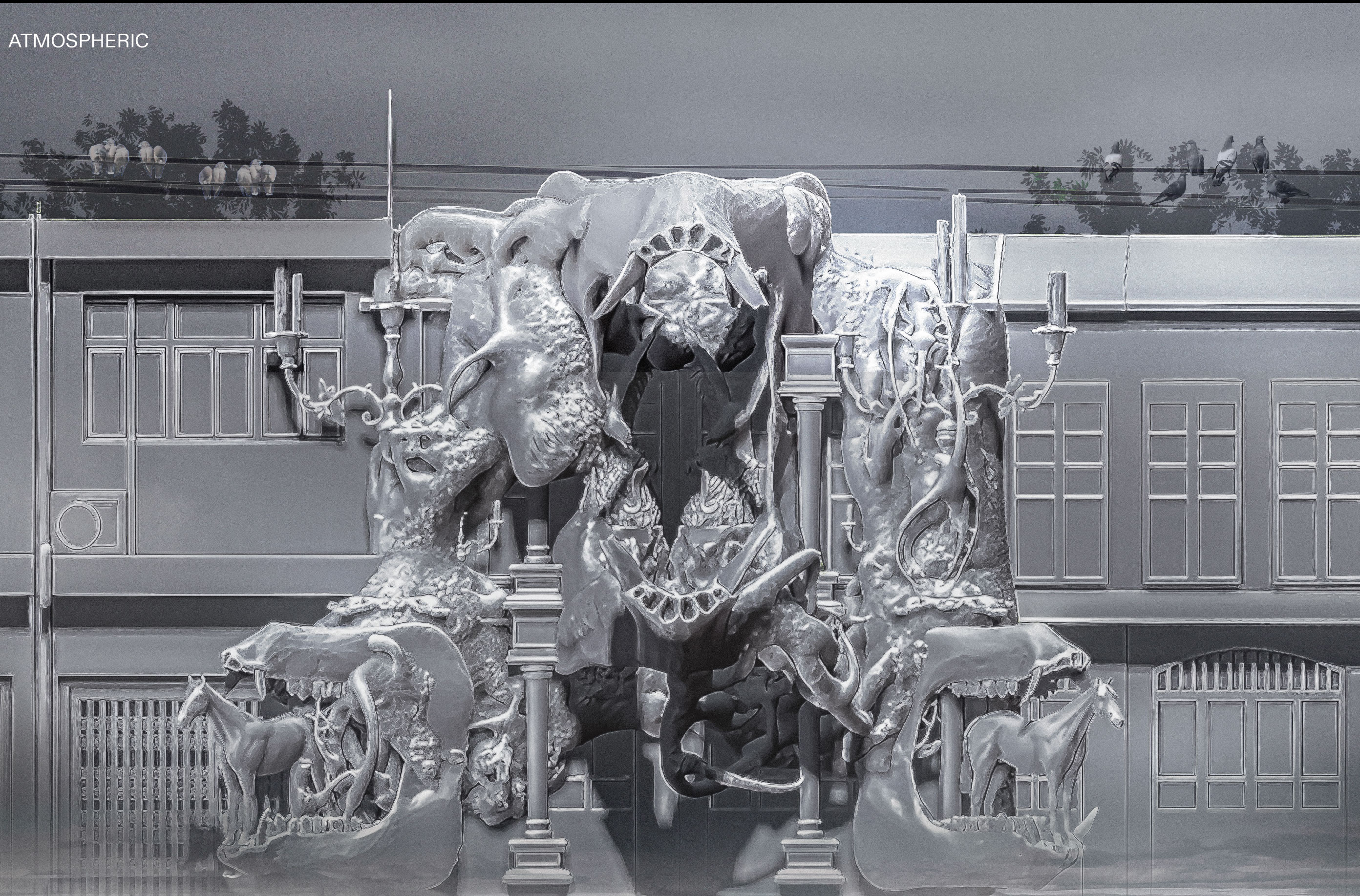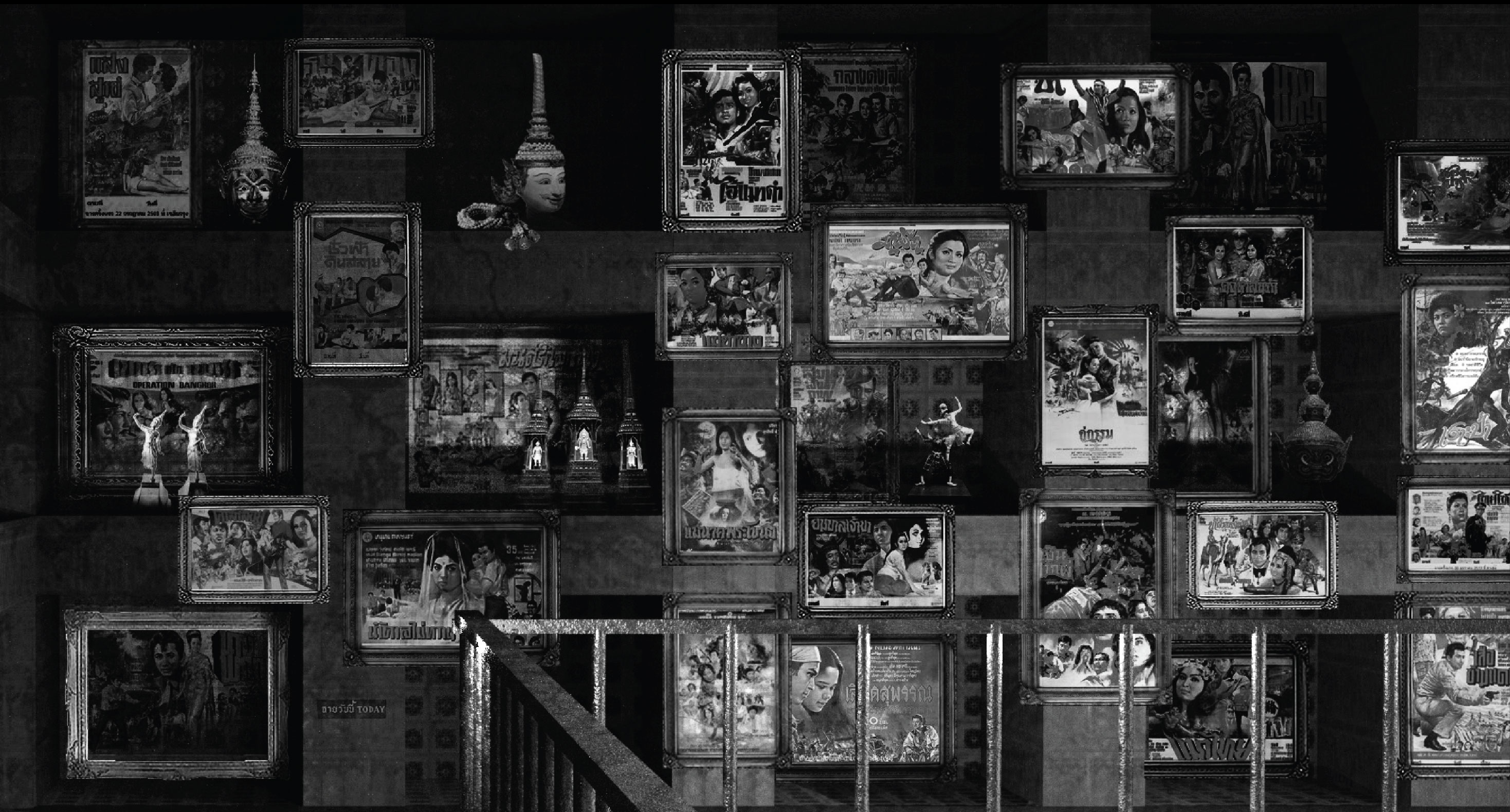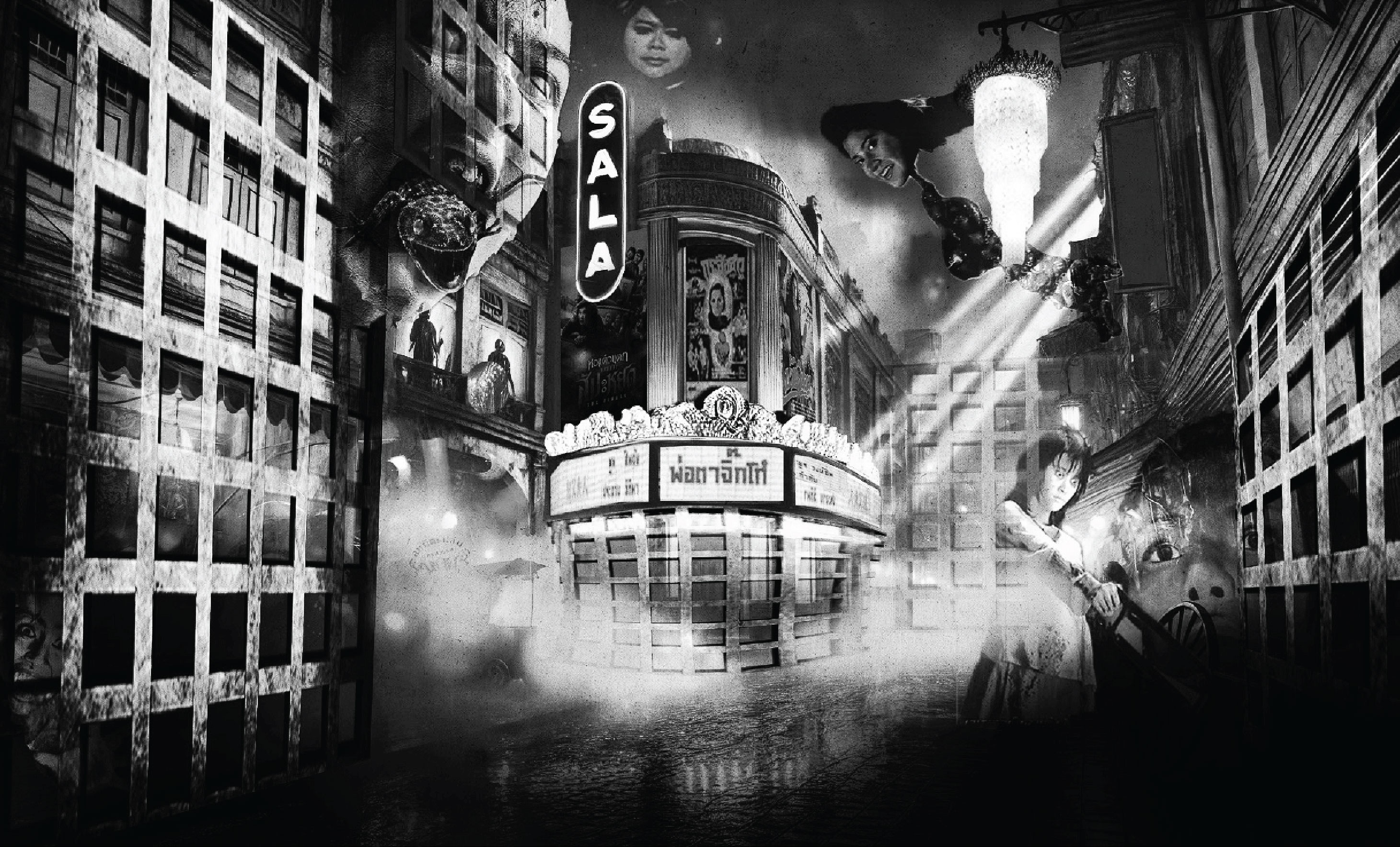Cinematic Bangkok
ZBrush, Rhino, V-Ray, Photoshop,
Adobe Illustrator, Grasshopper,
Adobe Lightroom, Adobe InDesign
This project reimagines cinema as an active architectural and cultural force within the urban fabric of contemporary Bangkok. In recent decades, the cinematic experience has become increasingly confined to the interiors of commercial malls, disconnected from public space and stripped of its architectural identity. The standalone cinema, once a civic landmark that animated daily urban life, has largely vanished from the streetscape.
This proposal introduces a distributed network of expressive cinemas that reconnect film with the public realm. Each theater is shaped by a distinct cinematic genre, transforming architecture into narrative. The featured design in this project centers on horror, both as a spatial theme and a cultural reference. Thailand is internationally known for its horror films, and the choice reflects both national identity and the designer’s personal fascination with the genre. The building evokes suspense and tension through scale, darkness, and atmospheric ornamentation.
Drawing inspiration from Antoni Gaudí’s approach to structure and storytelling, the design utilises ornament not as applied decoration but as a narrative device. The architecture performs, shifts mood, and invites interpretation. Inside, the spatial experience continues the theatricality, using contrast, depth, and visual cues to immerse the visitor in an unfolding story.
Beginning in Bangrak, across from the former Prince Theatre, the intervention reclaims a historically significant site and transforms it into a node of cultural engagement. Rather than concentrating cinema into isolated complexes, the project disperses cinematic experiences throughout the city, turning everyday neighborhoods into cinematic zones.
Ultimately, this proposal envisions Bangkok not as a backdrop to cinema, but as a cinematic city in itself, one where architecture tells stories, evokes emotion, and reactivates the imagination of public space.



